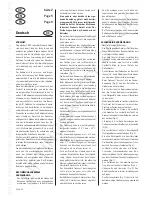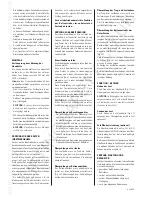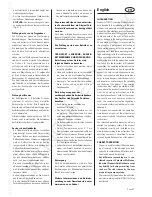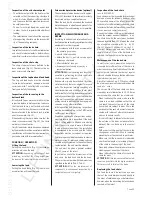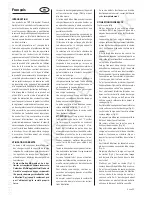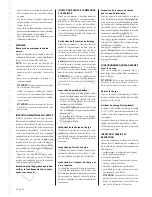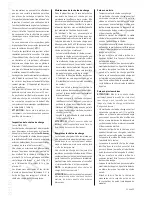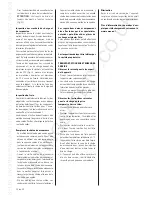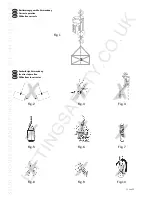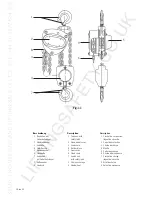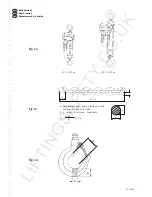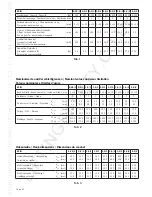
7 von 20
Inspection of the attachment point
- The attachment point for the hoist must be
selected so that the supporting structure to
which it is to be fi tted has suffi
cient stability
and to ensure that the expected forces can
be safely absorbed.
- The unit must align freely also under load
in order to avoid impermissible additional
loading.
- The selection and calculation of the appropri-
ate supporting structure are the responsibil-
ity of the operating company.
Inspection of the load chain
Inspect the load chain for suffi
cient lubrication
and check for external defects, deformations,
superfi cial cracks, wear and corrosion marks.
Inspection of the chain stop
The chain stop must always be fi tted to the
loose chain end (Fig. 11). There must be no
wear or incorrect alignment.
Inspection of the top hook and load hook
The top and load hooks must be checked
for cracks, deformations, damage, wear and
corrosion marks. The safety latch must move
freely and be fully functioning.
Inspection of chain reeving in the
bottom block
All units with two or more chain falls must be
inspected before initial operation to ensure
that the load chain is not twisted or kinked.
The chains of hoists with two or more falls may
become twisted if the bottom block is rolled
over, for example, (Fig. 10).
When replacing the chain, make sure that the
chain is reeved correctly (Fig. 12). The chain
weld must face outwards.
Only fi t load chains which have been approved
by the manufacturer. Non-compliance with this
specifi cation will render the legal warranty or
guarantee void with immediate eff ect.
FUNCTION / OPERATION
Lifting the load
Pulling the hand chain (Fig. 11) in clockwise
direction will raise the load.
ATTENTION:
Depending on the type of load
picked up, note that the lifting height may
be reduced for models with chain container!
Lowering the load
Pulling the hand chain (Fig. 11) in anticlock-
wise direction will lower the load.
Yale overload protection device (optional)
The overload protection device is set to approx.
25% (±15%) overload. Its adjustment must only
be carried out by a competent person.
When the load limit is exceeded, the overload
protection device is activated and prevents fur-
ther lifting of the load, lowering is still possible.
INSPECTION, MAINTENANCE AND
REPAIR
According to national and international acci-
dent prevention and safety regulations hoisting
equipment must be inspected:
• in accordance with the risk assessment of
the operating company
• prior to initial operation
• before the unit is put into service again
following a shut down
• after substantial changes
• however, at least once per year, by a
competent person.
ATTENTION:
Actual operating conditions (e.g.
operation in galvanizing facilities) can dictate
shorter inspection intervals.
Repair work may only be carried out by a spe-
cialist workshop that uses original Yale spare
parts. The inspection (mainly consisting of a
visual inspection and a function check) must
determine that all safety devices are complete
and fully operational and cover the condition
of the unit, suspension, equipment and sup-
porting structure with regard to damage, wear,
corrosion or any other alterations.
Initial operation and recurring inspections
must be documented (e.g. in the CMCO works
certifi cate of compliance).
If required, the results of inspections and ap-
propriate repairs must be verifi ed. If the hoist
(from 1 t lifting weight) is fi tted on or in a trolley
and if the hoist is used to move a lifted load
in one or several directions, the installation
is considered to be a crane and the further
inspections must be carried out, as required.
Paint damage should be touched up in order to
avoid corrosion. All joints and sliding surfaces
should be slightly greased. In the case of heavy
contamination, the unit must be cleaned.
The unit must be given a general overhaul
after 10 years, at the latest.
In particular, check the dimensions of the
load chain, the load hook and the top hook.
They must be compared with the dimensions
specifi ed in the table (Tab. 2, Tab. 3).
ATTENTION:
After the replacement of
components, a subsequent inspection by a
competent person is obligatory!
Inspection of the load chain
(acc. to DIN 685-5)
Load chains must be inspected for mechanical
damage at annular intervals, however after
50 operating hours, at the latest. Inspect the
load chain for suffi
cient lubrication and check
for external defects, deformations, superfi cial
cracks, wear and corrosion marks.
Round steel section chains must be replaced
when the original nominal thickness ´d´ on
the chain link with the worst wear has been
reduced by more than 10% or when the chain
has elongated over one pitch ´p
n
´ by 5 %
(Fig. 13) or over 11 pitches (11 x p
n
) by 3 %.
Nominal dimensions and wear limits are
shown in table 2. If one of the limit values is
reached, the load chain must be replaced.
Maintenance of the load chain
In most cases, chain wear in the link points
is caused by insuffi
cient care of the chain. In
order to ensure optimal lubrication of the link
contact points, lubricate the chain at regular
intervals adapted to the application with creep-
type lubricant (e.g. gear oil).
A dry fi lm lubricant, e.g. PTFE spray, should
be used in environments where abrasives like
sand, etc., occur.
The service life of the load chain can be in-
creased by careful lubrication to 20 - 30 times
compared with a chain that is not serviced.
- When lubricating the chain, make sure the
chain is in no-load condition so that the oil
can reach the contact points of the chain
links which are subject to wear. Chain link
parts contacting each other must always be
coated with lubricant, otherwise increased
wear on the chain results.
- It is not suffi
cient to lubricate the chains on
the outside as this does not ensure that a
lubricant fi lm can build up in the contact
points.
- With a constant lifting path of the chain, the
change-over area from lifting to lowering
movement must be checked in particular.
- Make sure that the load chain is lubricated
over its entire length, also including the part
of the chain in the housing of the hoist.
- Clean dirty chains with petroleum or a similar
cleaning agent, never heat the chain.
- When lubricating the chain, also check the
chain for wear.
ATTENTION:
It must be ensured that no lub-
ricant can penetrate into the brake enclosure.
This may result in failure of the brake.
Replacing the load chain
The load chain must be replaced by a new
chain of the same dimensions and quality in
the event of visible damage or deformations,
however, when the discarding status has been
reached, at the latest.
Summary of Contents for VSIII Series
Page 17: ...17 von 20...


